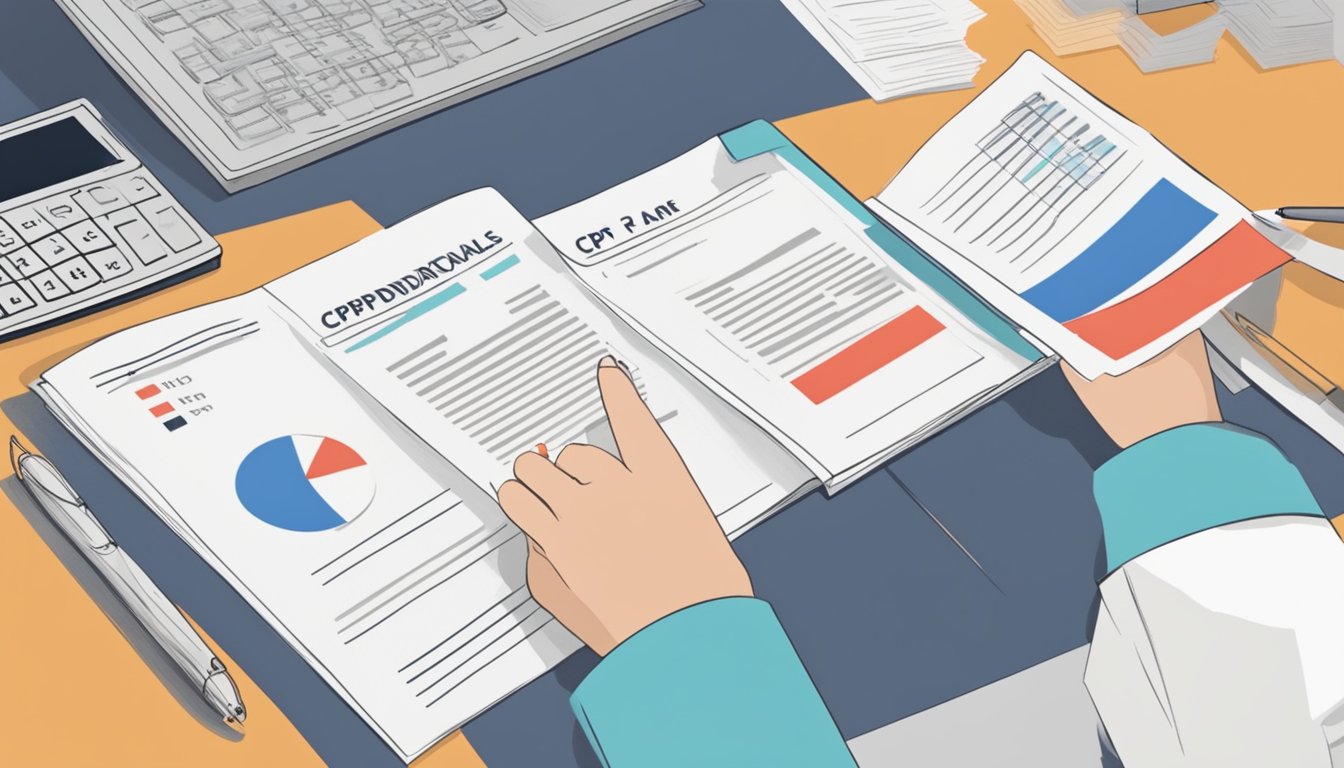If you’re a Singaporean, you’re probably familiar with the Central Provident Fund (CPF) and how it can be used to finance your home. However, what you may not know is that using your CPF for housing comes with accrued interest. This is the interest you would have earned if your CPF savings had not been withdrawn for housing. In this article, we’ll take a closer look at CPF accrued interest in Singapore and what you need to know about it.

Understanding CPF Accrued Interest
When you use your CPF Ordinary Account (OA) to finance your home, you’re essentially borrowing money from yourself. The amount you withdraw from your OA is considered a loan, and you’re required to pay it back with interest. The interest rate is currently set at 2.5% per annum, and it’s calculated on a monthly basis and compounded annually. This means that the longer you take to pay back the loan, the more interest you’ll have to pay.
CPF Ordinary Account and Housing
The CPF OA is one of three accounts in the CPF scheme, and it’s primarily used to save for housing, insurance, and investment. When you use your CPF OA to finance your home, you’re essentially using your own savings to pay for it. This can be a good thing because it means you won’t have to take out a separate loan from a bank or other financial institution. However, it also means that you’ll have to pay back the loan with interest, which will reduce the amount of money you have in your CPF OA for other purposes.
Key Takeaways
- When you use your CPF to finance your home, you’ll have to pay back the loan with accrued interest.
- The interest rate is currently set at 2.5% per annum, and it’s calculated on a monthly basis and compounded annually.
- The CPF OA is primarily used to save for housing, insurance, and investment, and using it to finance your home means you’re essentially borrowing money from yourself.
Understanding CPF Accrued Interest

If you are a Singaporean resident, you are likely to be familiar with the Central Provident Fund (CPF). CPF is a government-mandated savings scheme that aims to provide financial security for Singaporeans in their retirement years. One of the features of CPF is the accrued interest, which is an important factor to consider when planning for your retirement.
What is Accrued Interest?
Accrued interest is the interest amount that you would have earned if your CPF savings had not been withdrawn for housing. The interest is computed on the CPF principal amount withdrawn for housing on a monthly basis (at the current CPF Ordinary Account interest rate) and compounded yearly. The total amount that you’ll have to pay back to your CPF accounts is the principal amount with the accrued interest.
How CPF Interest is Calculated
According to the CPF website, CPF interest is credited to our accounts by 1 January of the following year and compounded annually. The CPF Ordinary Account (OA) interest rate is currently at 2.5% per annum. This means that the interest earned on your CPF savings is calculated based on the balance in your account at the end of the year and added to your account on 1 January of the following year.
The Impact of Accrued Interest on Savings
The impact of accrued interest on your savings can be significant. If you have withdrawn a large amount of money from your CPF account for housing, the accrued interest can add up over time. This means that you will have to pay back more money to your CPF account when you sell your property or when you reach the age of 55.
It is important to note that accrued interest is not just limited to housing withdrawals. Any CPF withdrawals made before the age of 55 will also incur accrued interest. Therefore, it is important to plan your finances carefully and only withdraw from your CPF account when necessary.
In conclusion, understanding CPF accrued interest is crucial for Singaporeans who are planning for their retirement. By knowing how it is calculated and how it impacts your savings, you can make informed decisions about your finances and ensure that you have enough funds to support yourself in your golden years.
CPF Ordinary Account and Housing

If you are a homeowner in Singapore, you are likely familiar with the Central Provident Fund (CPF) and how it can be used to finance your home. The CPF Ordinary Account (OA) is a savings account that is used to fund your housing needs. In this section, we will discuss how the CPF OA can be used for property and the minimum occupancy period that is required.
Using OA Funds for Property
The CPF OA can be used to pay for the downpayment, monthly instalments, and other related fees when purchasing a property. However, it is important to note that the amount that can be used is subject to the valuation limit and the withdrawal limit. The valuation limit is the lower of the purchase price or the value of the property, while the withdrawal limit is the amount that can be withdrawn from the CPF OA.
Minimum Occupancy Period and Interest
When you use money from your CPF OA to pay for a house in Singapore, you have to pay back the same amount plus an accrued interest when you sell the property. The accrued interest is the interest amount that you would have earned if your CPF savings had not been withdrawn for housing. The interest is computed on the CPF principal amount withdrawn for housing on a monthly basis (at the current CPF OA interest rate) and compounded yearly.
It is important to note that there is a minimum occupancy period (MOP) that needs to be fulfilled before you can sell your property. The MOP is usually five years, and during this period, you cannot sell your property or use it as collateral for a loan. If you do not fulfil the MOP, you will have to pay a penalty, and you may also have to pay back the housing grants that you received.
Enhanced CPF Housing Grant
The Enhanced CPF Housing Grant (EHG) is a housing grant that is available to first-time homebuyers. The EHG provides up to $80,000 in grants to eligible households to help them purchase a new flat. To be eligible for the EHG, you must be a first-time homebuyer, have a gross monthly income of up to $9,000, and purchase a new flat in a non-mature estate.
In conclusion, the CPF OA can be used to fund your housing needs in Singapore. However, it is important to understand the minimum occupancy period and the accrued interest that needs to be paid back when you sell your property. Additionally, the EHG is a housing grant that can help first-time homebuyers purchase a new flat.
Maximising Your CPF Savings

If you’re looking to maximise your CPF savings, there are a few things you can do to ensure that you’re getting the most out of your account. Here are some tips to help you maximise your CPF savings:
Top-ups and Voluntary Contributions
One of the easiest ways to maximise your CPF savings is to make top-ups and voluntary contributions. You can make top-ups to your CPF account using cash or your CPF savings, and these top-ups can help you earn more interest on your savings.
For example, if you’re over 55 years old, you can earn up to 6% p.a. interest on your CPF savings. By making top-ups, you can ensure that you’re earning the maximum amount of interest possible.
Investment Schemes Linked to CPF
Another way to maximise your CPF savings is to invest in schemes that are linked to CPF. These investment schemes allow you to earn higher returns on your savings, and they’re a great way to grow your money over time.
One such investment scheme is the CPF Investment Scheme (CPFIS), which allows you to invest your CPF savings in a range of investment products. These products include unit trusts, exchange-traded funds (ETFs), and other investment instruments.
Another investment scheme is the CPF Retirement Sum Scheme (RSS), which allows you to receive a monthly payout from your CPF savings when you reach the age of 65. This scheme is a great way to ensure that you have a steady stream of income in your retirement years.
CPF Online Services
To make it easier to manage your CPF savings, you can use the CPF online services. These services allow you to check your CPF balance, make top-ups and voluntary contributions, and apply for various CPF schemes and benefits.
By using these online services, you can ensure that you’re always up-to-date on your CPF savings and that you’re taking advantage of all the benefits and schemes available to you.
In conclusion, by making top-ups and voluntary contributions, investing in schemes linked to CPF, and using CPF online services, you can maximise your CPF savings and ensure that you’re getting the most out of your account.
Retirement Planning with CPF

If you are a Singaporean citizen or PR, you are required to contribute to the Central Provident Fund (CPF) for your retirement. The CPF is a comprehensive social security system that helps Singaporeans save for their retirement, healthcare, and housing needs. In this section, we will discuss how CPF accrued interest works and how it can help you plan for your retirement.
Understanding the Retirement Account
The Retirement Account (RA) is a special account under the CPF that is meant for your retirement. When you turn 55, your CPF savings in your Ordinary Account (OA) and Special Account (SA) will be transferred to your RA. Your RA will then be used to provide you with a monthly payout under the CPF Life scheme.
The Full Retirement Sum (FRS) is the minimum amount you need to have in your RA to receive the CPF Life payout. The FRS is adjusted yearly to account for inflation. As of 2024, the FRS is $226,500. If you do not have enough savings in your RA to meet the FRS, you can use your CPF OA savings to make up the shortfall.
CPF Life and Retirement Sums
CPF Life is a life annuity scheme that provides you with a monthly payout for life starting from age 65. The payout amount depends on the CPF Life plan you choose and the amount of retirement savings you have. There are three CPF Life plans – Standard, Escalating, and Basic.
To qualify for CPF Life, you need to have a Retirement Sum in your RA. The Retirement Sum is the amount of savings you need to set aside in your RA to receive the CPF Life payout. There are three Retirement Sum schemes – Basic Retirement Sum (BRS), Full Retirement Sum (FRS), and Enhanced Retirement Sum (ERS). As of 2024, the BRS is $90,000, the FRS is $226,500, and the ERS is $339,750.
In conclusion, CPF accrued interest plays an important role in retirement planning in Singapore. By contributing to your CPF OA and SA, you can build up your retirement savings and ensure a steady stream of income in your golden years. Remember to keep track of your CPF savings and plan ahead to meet the Retirement Sum and FRS requirements.
CPF Withdrawals and Regulations

When it comes to withdrawing your CPF savings, there are certain limits and conditions that you need to be aware of to avoid penalties. Here are some of the important regulations you should know.
Withdrawal Limits and Conditions
The CPF Board allows you to withdraw a certain amount of your CPF savings based on your age and the type of account you have. For example, if you’re 55 years old or above, you can withdraw up to $5,000 from your CPF savings. However, if you want to withdraw more than that, you’ll need to meet certain conditions.
If you’re below 55 years old, you can only withdraw your CPF savings under certain circumstances, such as purchasing a property or paying for medical expenses. In addition, the CPF Board requires you to set aside a certain amount of your savings as your Retirement Sum, which you cannot withdraw until you reach your retirement age.
Penalties for Early Withdrawal
If you withdraw your CPF savings before you meet the withdrawal conditions or without meeting the minimum Retirement Sum, you may face penalties. These penalties can include a reduction in the amount of interest you receive on your savings or even a fine.
It’s important to note that the CPF Board imposes penalties to discourage early withdrawal and ensure that you have enough savings for your retirement. Therefore, it’s advisable to only withdraw your CPF savings when you truly need them and to plan your finances accordingly.
In summary, withdrawing your CPF savings can be a complex process that requires careful consideration and adherence to certain regulations. By understanding these regulations, you can ensure that you make informed decisions about your CPF savings and avoid unnecessary penalties.
Frequently Asked Questions

How exhilarating is it to discover the current rates for CPF accrued interest?
Discovering the current rates for CPF accrued interest can be quite exhilarating! As of February 2024, the CPF Ordinary Account (OA) interest rate is 2.5% per annum, while the Special and Medisave Accounts (SMA) and Retirement Account (RA) interest rates are 4% per annum. These rates are reviewed quarterly, so be sure to keep an eye out for any changes!
What’s the thrilling way to calculate CPF accrued interest?
Calculating CPF accrued interest can be thrilling when you know how to do it! The interest is computed on the CPF principal amount withdrawn for housing on a monthly basis (at the current CPF OA interest rate) and compounded yearly. To calculate the accrued interest on your CPF savings, you can use the following formula: (Principal Amount x Number of Years) x Interest Rate.
At what age does the accumulation of CPF interest cease, and what’s the buzz about it?
The accumulation of CPF interest ceases at age 55. However, you can still earn interest on your CPF savings if you choose to leave them in your account. There is a buzz about this because leaving your CPF savings in your account can help you earn more interest over time, which can be beneficial for your retirement.
Is there a delightful method to repay CPF accrued interest?
While repaying CPF accrued interest may not be the most delightful thing, there is a method to do it! The total amount that you’ll have to pay back to your CPF accounts is the principal amount with the accrued interest. You can choose to make a lump-sum payment or monthly instalments to repay the amount.
How can I gleefully check the amount of accrued interest in my CPF account?
Checking the amount of accrued interest in your CPF account can be gleeful when you know how to do it! You can check your CPF balance and accrued interest by logging into your CPF account on the CPF website or using the CPF mobile app.
Does CPF interest accumulate monthly, and isn’t that just fascinating?
Yes, CPF interest accumulates monthly, and it is fascinating! The interest is computed on a monthly basis and compounded yearly, which means that you can earn more interest over time. This can be beneficial for your retirement savings, so be sure to keep track of your CPF balance and accrued interest.




